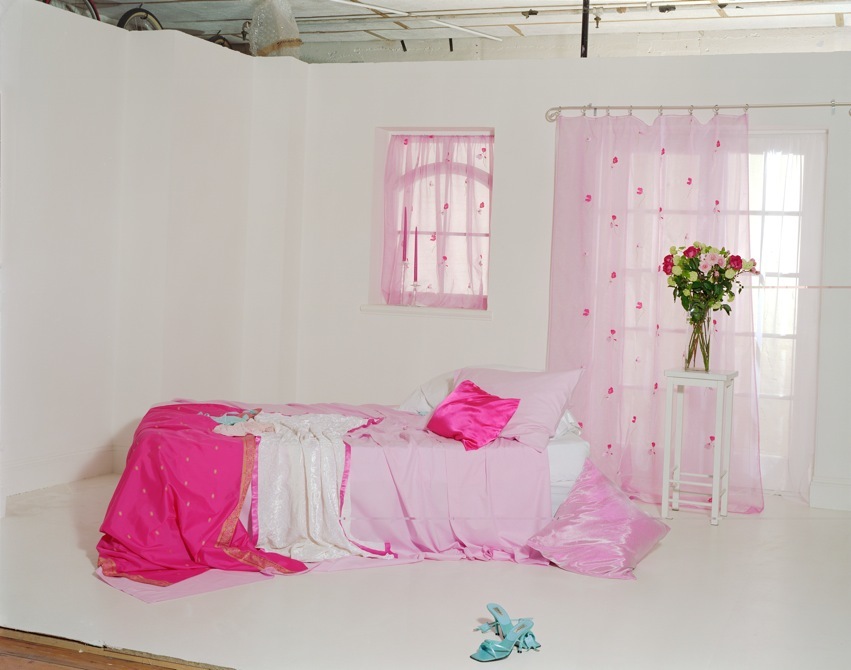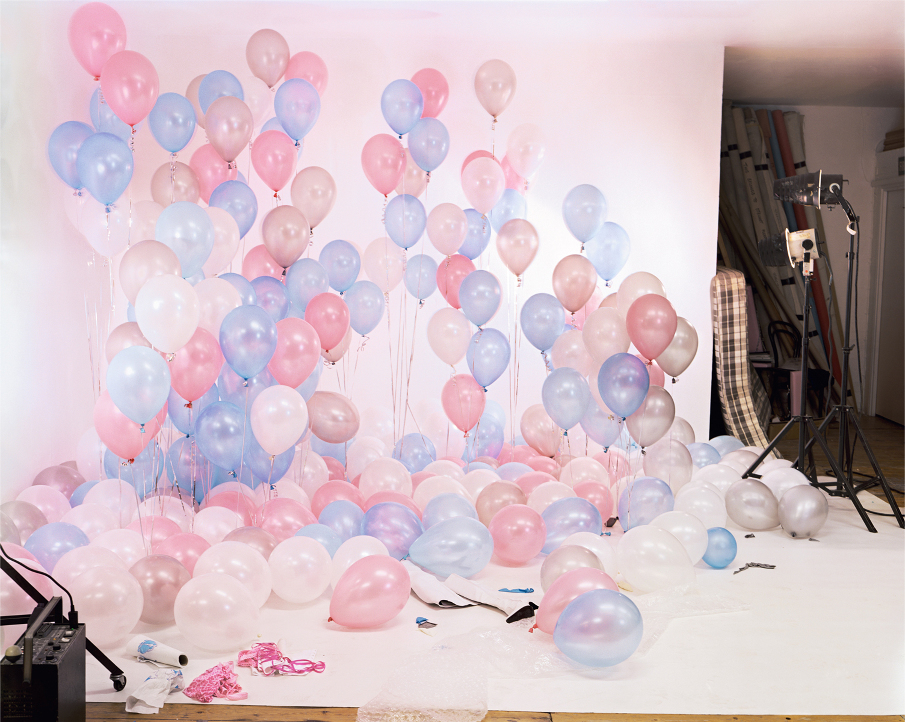“A lot of love that went into those sets,” says photographer Jo Broughton over the phone from London. In the mid 90s, as an undergraduate art student in Essex, Jo worked as an assistant at a pornography studio, thanks to an administrative mixup.
“At first, I was the tea lady, painting sets, doing lunch runs, the general dogsbody,” she explains. But after befriending the studio’s owner, Steve (a former employee of British adult entertainment baron Paul Raymond), Jo, then a self-described dysfunctional teenager, eventually ended up living at the studio for a short time. And later, while she was a cleaner at the space, she began documenting the elaborate scenes left behind after shoots. “I do remember some weird days,” she tells me.
Though she’s long since moved on to other, more reputable, photography studios — working both on her own fine art series and with commercial photographers — Jo recently showed the work again at the London Art Fair. “I’ve shown the series a few times before, and it didn’t get that much attention at all. People weren’t ready to receive it because it had all these connotations. But I think it’s the work’s time now,” she says. Far from capturing the smuttiness of their setting, Jo’s images hint at the humorous theatricality of adult photography, and document a bygone age of artistry.
What was the strangest job you had at the studio?
Once, Steve made me sit in the bathroom while he was shooting a girl in the bath, and I had to flick bubbles at her privates. I remember being so terrified I kept closing my eyes. And every day it was tea and coffee. It didn’t matter what shoot he was doing — I just made copious amounts of tea.
Was this your first experience of working in a photography studio?
Yes, I was sent on work experience by my art school. They thought it was a fashion studio. So when I first turned up I was wearing a ball dress (I have no idea why I thought that was what you wore to a fashion studio!). I had no clue. But I soon learned that you wore old clothes because you were going to get grimy. I never told the university what kind of studio it really was.
Did they send other students there?
The guy who sent me there — the head of my department — his son actually appeared in a film, I found out later. I wondered why he kept winking at me when he was on set. I always thought he had a funny eye! I was so unaware of what was going on. And I think they enjoyed the fact that I was a bit naive.
What was the moment when you realized it wasn’t a fashion studio?
Jo Guest, who was quite a famous porn star in the late 90s, walked out in suspenders, stockings, lacy stuff, and a little hat. Then she laid down on a nurse’s bed and stuck a thermometer up her.
Did you tell your friends and family what was going on?
No. My grandad worked it out though, funnily enough. I was living with a bunch of misfits in shared accommodation then. Some of them thought they were witches, and they were all running around in tie-dye. I was really young. I was also warned by the studio not to mention it to anyone. At that point, you were seen as the devil [if you worked in porn]. People used to ring up the studio and scream obscenities down the phone.
Who made the sets?
A girl at the studio — and she’d actually gone to the same college I had! What always used to strike me is how much work went into them. Hiring the furniture, days of construction. They used to paint huge backdrops. They once painted a giant one of the Roman Empire.
When did you start taking photos of the sets?
I actually left the studio for a while. I think Steve kind of sacked me — I was very clumsy. Then later, when I was doing my MA at the Royal College of Art, the cleaning lady who cleaned the studio got ill, so Steve said I could use the studio and he’d pay me to clean it. So I started shooting the sets after they’d been left. It was always a struggle to get there before they got tidied up. The studio staff quite enjoyed it in the end because I would take down the set after I’d shot it — so they didn’t have to do the work.
How had the shoots changed since your time as an assistant?
When I was 17 and working there, the law was so much tighter. You could only have flaccid penises, everything was just a suggestion. But years later, because of the internet, it was full-on. I was shocked at how much the industry had changed.

What does showing the photos in 2016, almost a decade later, add to them?
It shows an era that’s not there anymore. It shows the craftsmanship. They used to shoot on film, and sometimes transparencies, where there’s such a narrow margin for error — you had to get it right. And you could see how much attention they paid to detail, how much they enjoyed making up the scenarios and stories.
What were your favorite sets?
The helium balloons I really liked, and I thought the ice cave was superb. And the pink bedroom — the lighting in that was absolutely phenomenal. It’s a five-piece lighting set. Now, it’s just clean light. Back then, Steve used to backlight the hair! It was a hub of creativity.
How would you rate it as work experience? What were the most important things you learned about being a photographer?
Steve had actually trained as an art photographer, so he was really helpful with bouncing around ideas for projects. I also learned there’s someone out there for everybody! And I learned humanity. And that, more than anything, has helped me in my ability to take photos.
Credits
Text Alice Newell-Hanson
Photography Jo Broughton
